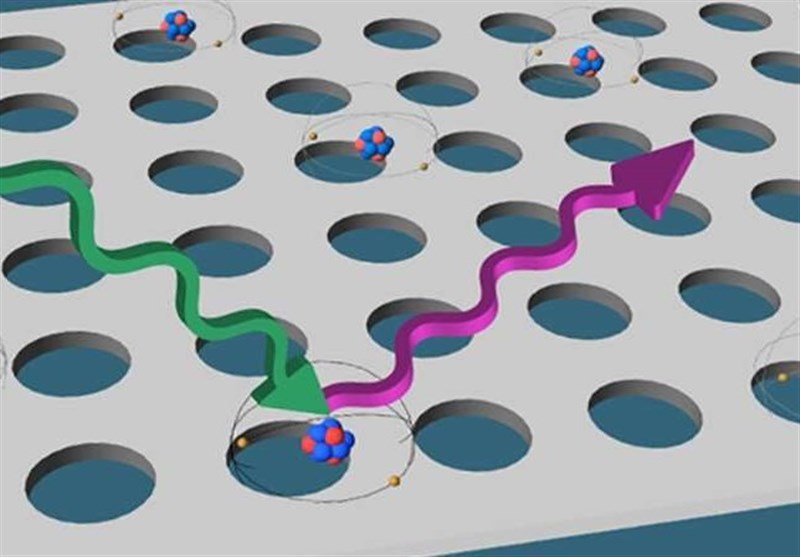Artificial Atoms Made to Work at Room Temperature
TEHRAN (Tasnim) - A simple way was discovered to fabricate artificial atoms with nanotechnology methods onto a microchip that work in ambient conditions suitable for secure online communications.
Ultra-secure online communications, completely indecipherable if intercepted, is one step closer with the help of a recently published discovery by University of Oregon physicist Ben Aleman.
Aleman, a member of the UO's Center for Optical, Molecular, and Quantum Science, has made artificial atoms that work in ambient conditions. The research, published in the journal Nano Letters, could be a big step in efforts to develop secure quantum communication networks.
"The big breakthrough is that we've discovered a simple, scalable way to nanofabricate artificial atoms onto a microchip, and that the artificial atoms work in air and at room temperature," said Aleman.
"Our artificial atoms will enable lots of new and powerful technologies," he added. "In the future, they could be used for safer, more secure, totally private communications, and much more powerful computers that could design life-saving drugs and help scientists gain a deeper understanding of the universe through quantum computation."
Joshua Ziegler, a doctoral student researcher in Aleman's lab, and colleagues drilled holes -500 nanometers wide and four nanometers deep- into a thin two-dimensional sheet of hexagonal boron nitride, which is also known as white graphene because of its white color and atomic thickness.
To drill the holes, the team used a process that resembles pressure-washing, but instead of a water jet uses a focused beam of ions to etch circles into the white graphene. They then heated the material in oxygen at high temperatures to remove residues.
With the success of the project, Aleman said, the UO is now ahead of the pack in efforts to develop such materials in quantum research.
"Our work provides a source of single photons that could act as carriers of quantum information or as qubits. We've patterned these sources, creating as many as we want, where we want," Aleman noted.
"We'd like to pattern these single photonemitters into circuits or networks on a microchip so they can talk to each other, or to other existing qubits, like solid-state spins or superconducting circuit qubits," he concluded.






